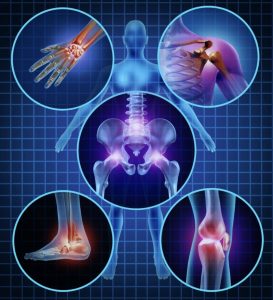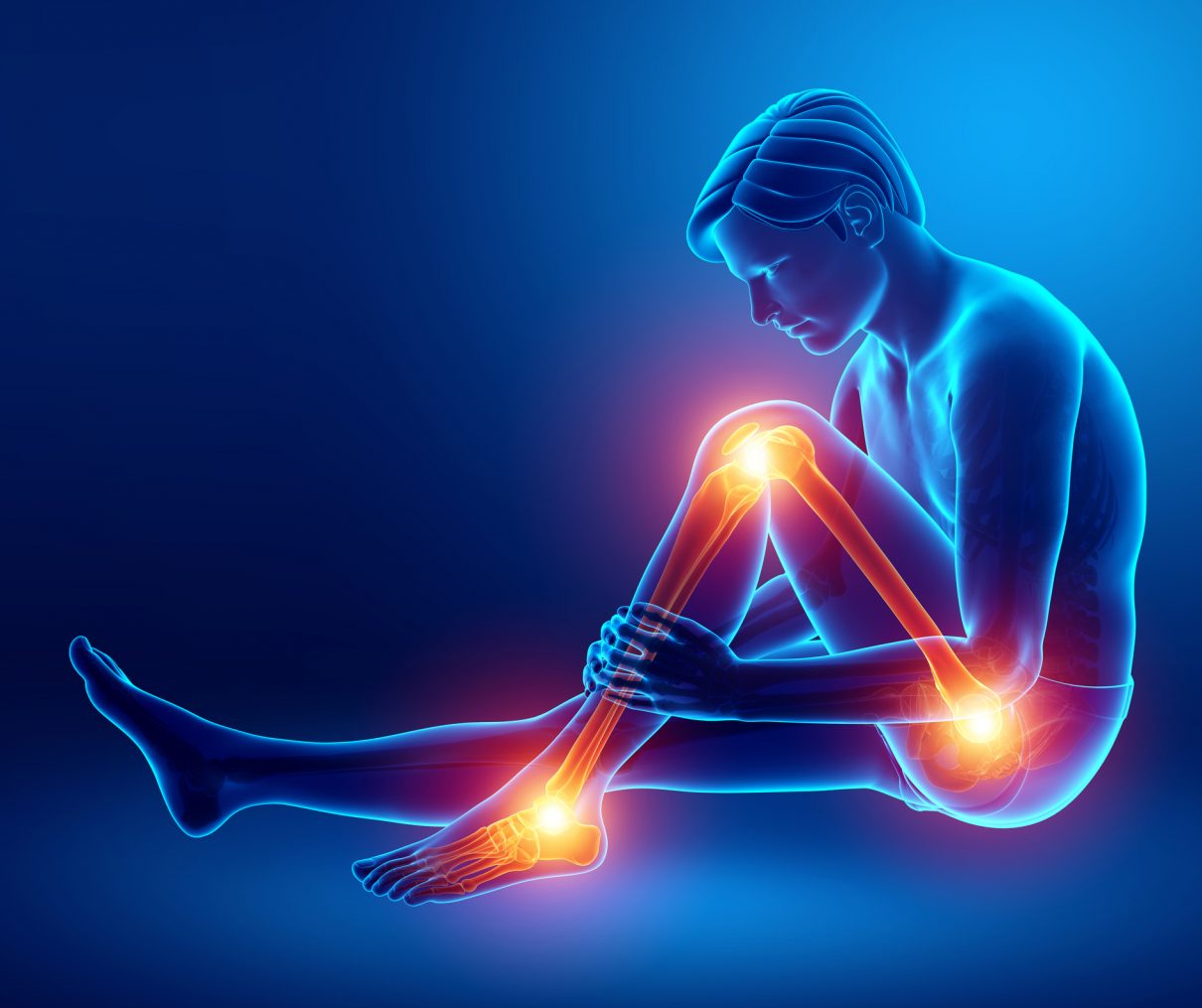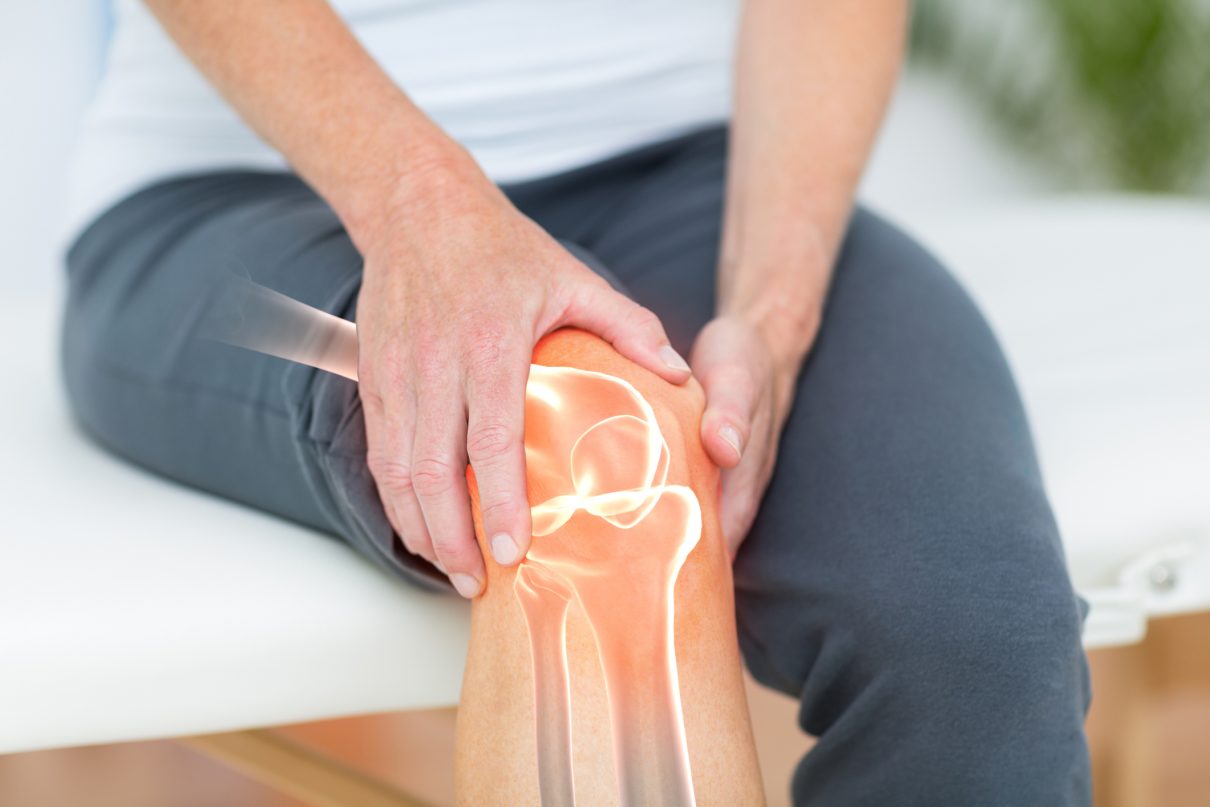อาการปวดเรื้อรัง
อาการปวดเรื้อรังเป็นอาการปวดแบบถาวรหรือเกิดขึ้นนานกว่า 3 เดือนนับตั้งแต่เริ่มมีอาการ หรือ อาการปวดที่เกินระยะเวลาที่คาดหวังการรักษาไว้ โดยอาการปวดสามารถอยู่ได้นานหลังจากได้รับบาดเจ็บหรือความเจ็บป่วยที่เกิดขึ้นก่อนหายไปแล้ว อาการปวดเรื้อรังสามารถอยู่ได้นานหลายเดือนจนถึงหลายปี ซึ่งส่งผลเสียต่อความเป็นอยู่ที่ดีของบุคคลและความสามารถในการทำกิจกรรมประจำวัน
พยาธิสรีรวิทยา
ภายใต้การกระตุ้นอย่างต่อเนื่อง จากการส่งสัญญาณความเจ็บปวดไปยังดอร์ซัลฮอร์น อาจทำให้เกิดอาการปวด เรียกปรากฎการณ์นี้ว่า wind-up ตัวกระตุ้นที่เปลี่ยนแปลงนี้อยู่ในระดับที่ต่ำกว่าสำหรับสัญญาณความเจ็บปวดที่จะส่งผ่าน ชนิดของเส้นใยประสาทที่เชื่อว่าสร้างสัญญาณความเจ็บปวดคือ C-fiber เนื่องจากมีการนำไฟฟ้าที่ช้าและก่อให้เกิดความรู้สึกเจ็บปวดที่คงอยู่เป็นเวลานาน ในอาการปวดเรื้อรังกระบวนการนี้ยากที่จะย้อนกลับหรือหยุดทันทีที่เกิดขึ้น ในบางกรณีอาการปวดเรื้อรังอาจเกิดจากปัจจัยทางพันธุกรรมซึ่งรบกวนการสร้างความแตกต่างของเส้นประสาท ทำให้เกิดระดับความเจ็บปวดที่ลดลงอย่างถาวร
ในผู้ที่มีอาการปวดเรื้อรัง EEG จะแสดงให้เห็นถึงการทำงานของสมองที่มีการเปลี่ยนแปลง, การเปลี่ยนแปลงทางระบบประสาทที่เกิดจากความเจ็บปวด โดยเฉพาะอย่างยิ่งกิจกรรมเบต้าสัมพันธ์ (เมื่อเทียบกับส่วนที่เหลือของสมอง) เพิ่มขึ้น, กิจกรรมอัลฟาสัมพันธ์ลดลง และกิจกรรมทีต้าลดลง
การจัดการโดปามีนที่ผิดปกติในสมอง อาจทำหน้าที่เป็นกลไกที่ใช้ร่วมกันระหว่างอาการปวดเรื้อรัง, นอนไม่หลับ และโรคซึมเศร้า พบว่า Astrocytes, microglia และ satellite glial cell มีความผิดปกติในผู้ที่มีอาการปวดเรื้อรัง โดยมีการเพิ่มกิจกรรมของ microglia, การเปลี่ยนแปลงของเครือข่าย microglial และการเพิ่มการผลิตของ chemokines และ cytokines โดย microglia ซึ่งอาจทำให้อาการปวดเรื้อรังรุนแรงขึ้น Astrocytes ถูกพบว่ามีการสูญเสียความสามารถในการควบคุมความตื่นเต้นของเซลล์ประสาท, มีการเพิ่มการทำงานของระบบประสาทที่เกิดขึ้นเองในวงจรความเจ็บปวด
สาเหตุ
อาการปวดเรื้อรังมีได้จากหลายสาเหตุ โดยสถาบันเพื่อการปรับปรุงระบบคลินิก ได้แบ่งอาการปวดเรื้อรังออกเป็น 4 ประเภทหลัก คือ
1. การปวดประสาท
2. การปวดกล้ามเนื้อ
3. การปวดอักเสบ
4. การปวดจากการใช้งาน หรือจากการกดทับ
การวินิจฉัยโรค
ยังไม่มีวิธีวัดความเจ็บปวดอย่างเป็นรูปธรรม โดยเฉพาะผู้ที่มีอาการปวดเรื้อรังเท่านั้นที่สามารถให้คำอธิบายว่าเขาหรือเธอรู้สึกเจ็บปวดแค่ไหน แพทย์จะทำการซักประวัติว่ามีอาการปวดอยู่ที่ใด, มีอาการปวดมานานแค่ไหน และไม่ว่าจะปวดชัดเจน ปวดตื้อ หรือปวดตลอด หรือปวดๆหายๆ บางครั้งผู้ป่วยจะถูกขอให้ให้คะแนนว่าอาการปวดแย่เพียงใดโดยใช้เกณฑ์ตัวเลขและให้รายละเอียดเพิ่มเติม โดยแพทย์จะทำการตรวจร่างกายและอาจสั่งการตรวจวินิจฉัยเพิ่มเติม รวมถึง
● การทดสอบในห้องปฏิบัติการเพื่อวิเคราะห์เลือด, ปัสสาวะและ/หรือของเหลวจากไขสันหลังและสมอง
● การทดสอบกล้ามเนื้อและกระดูก หรือระบบประสาทเพื่อประเมินปฏิกิริยาตอบสนองทางด้านความรู้สึก, การทรงตัวและสหสัมพันธ์
● การทดสอบด้วยการถ่ายภาพ เช่น
○ การถ่ายภาพด้วยคลื่นสนามแม่เหล็ก (MRI) เพื่อรับการสแกนของสมองเส้นประสาทไขสันหลังและโครงสร้างอื่นๆ
○ การเอ็กซ์เรย์ เพื่อให้ได้ภาพของกระดูก, ข้อต่อ และโครงสร้างอื่นๆ
● ขั้นตอนการวินิจฉัยด้วยไฟฟ้า เช่น
○ การตรวจคลื่นไฟฟ้าหัวใจ เพื่อทดสอบกิจกรรมของกล้ามเนื้อ
○ การศึกษาการนำกระแสประสาท เพื่อบันทึกว่าเส้นประสาทกำลังทำงานอย่างไร
การรักษา
การรักษาอาการปวดเรื้อรังนั้นมีความหลากหลายเท่ากับสาเหตุ ตั้งแต่ยาที่ต้องสั่งโดยทั่วไปและยาตามใบสั่งแพทย์ไปจนถึงเทคนิคทางจิตใจ/ร่างกาย รวมไปถึงการฝังเข็ม
มีวิธีการมากมายในการรักษา แต่เมื่อพูดถึงการรักษาอาการปวดเรื้อรังไม่มีเทคนิคใดที่รับประกันว่าจะช่วยบรรเทาอาการปวดได้อย่างสมบูรณ์ บรรเทาอาการได้โดยใช้ตัวเลือกการรักษารวมกัน ดังนี้
● การบำบัดด้วยยา
● การคลายจุดเจ็บในกล้ามเนื้อด้วยการฉีดยาชา
● การผ่าตัดใส่อุปกรณ์ แบ่งออกเป็น 2 ชนิดหลักเพื่อช่วยควบคุมความเจ็บปวด:
○ Intrathecal Drug Delivery
○ Spinal Cord Stimulation Implants
● การกระตุ้นเส้นประสาททางผิวหนังด้วยไฟฟ้า
● การบำบัดด้วยพลังงานชีวภาพ
● กายภาพบำบัด
- Published in Orthopedic Rehabilitation Center, Services
Chronic pain
What is Chronic Pain?
Chronic pain is a pain that lasts longer than the normal cause of healing, recurring and sometimes persistent all day long but may differ in severity. Even if the injury or illness has been resolved or healed, or managed with pain medications, chronic pain can still be felt from months to years. It affects a person’s quality of life and disrupts activities of daily living. For long term conditions, people with chronic pain develop low self-esteem, angry, depressed, anxious, and frustrated.
What are causes of Chronic Pain?
There are numerous causes of chronic pain but the main types are grouped as the following:
- Neuropathic (nerve-related) pain– caused by damaged or malfunctioning sensory receptors and neurons in the nervous system. One example is sciatica (pain in the back, hip, and upper thigh related to the sciatic nerve).
- Muscle pain– this pain comes from problems with the skeletal muscles. It can affect areas such as the lower back, hips, legs and feet, neck, shoulders, arms, and trunk of the body. It often occurs after an injury or following repetitive motions.
- Inflammatory pain – causes include arthritis, tissue injury, infection or post-surgical complications.
- Mechanical/compressive pain: causes include fractures, disc degeneration, or compression of tissue by tumors, cysts, or bony structures.
Role of Functional Medicine
Functional Medicine focuses on finding the underlying factors that play a role in the patient’s chronic pain. Individualized treatment/therapeutic plans are created after a comprehensive evaluation of the patient’s clinical imbalances, diet, lifestyle, psychological well-being, and results of Functional Lab tests. After identifying the underlying cause of one’s chronic pain, our specialists can advise an integration of programs that can help the patient achieve relief from symptoms. Nutritional status, proper supplementation, appropriate physiotherapy may be combined with shockwave therapy, G-Factor and other related management that directly addresses the underlying causes.
- Published in Orthopedic Rehabilitation Center, Services
ARTHRITIS
What is Arthritis?
Arthritis is a very common problem of inflammation of the joints. It affects both children and adults but is more common as people get older. There are many causes of arthritis such as injury, abnormal metabolism, genetic makeup, infections, and immune system dysfunction. There are about 100 different types with many related conditions. Osteoarthritis being the most common type. Arthritis occurs when the cartilage (cushioning connective tissue) in our joints become thin and wear away, bone rubs against bone which then causes the symptoms.
Signs and Symptoms
Symptoms include swelling, pain, stiffness and decreased range of motion. Symptoms may come and go and can be mild, moderate or severe. The symptoms could stay the same for years, but may progress or get worse over time. Severe arthritis can result in chronic pain, inability to do daily activities and make it difficult to move around. It may greatly affect one’s quality of life. Conventional treatment and management involves medications, physical therapies, patient education and support, surgeries, and many alternative treatments with an assortment of claims.
Role of Functional Medicine in Arthritis
A functional approach recognizes that the immune system is in charge of both inflammation and anti-inflammation processes. Functional medicine exposes the root cause of the confused immune system and when we treat this, the body can realign the natural immune response. The body has the ability to heal itself and it all starts with an initial examination, comprehensive neurologic and metabolic exam with necessary tests.
Functional medicine treatment plan promotes healing and improvement of cell functions through personalized nutrition plan, certain physiotherapy activities applicable to the patient’s specific condition and promising new treatments such as G-Factor and NAD.
Make an appointment
Please click here to make an appointment with our doctor.
- Published in Orthopedic Rehabilitation Center, Services

 English
English  繁體中文
繁體中文  العربية
العربية  Português
Português  Español
Español 



